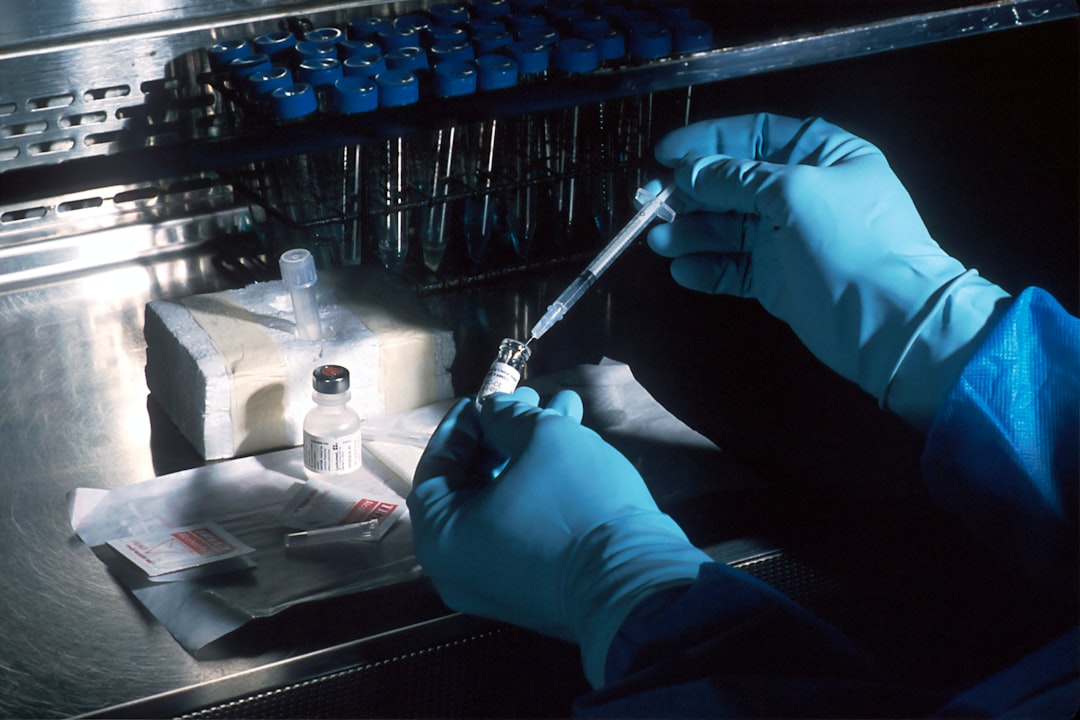Uncovering the Hidden Dangers: How Alcohol Increases Your Cancer Risks
Understanding the Connection Between Alcohol and Cancer Risks
The classification of alcohol as a Group 1 carcinogen by the International Agency for Research on Cancer underscores the profound implications of alcohol consumption on cancer development. This categorization places alcohol in the same category as other known carcinogens, highlighting the critical need for public awareness. In the United States alone, around 5% of new cancer cases and about 4% of cancer-related deaths each year are linked to alcohol consumption, emphasizing the significant impact this lifestyle choice can have on public health. Various cancers, notably breast, liver, and colorectal cancer, have shown heightened risks associated with alcohol use.
Even moderate drinking can present dangers, as studies reveal that even low levels of alcohol consumption can increase the risk of developing certain cancers, particularly breast and colorectal cancers. For instance, women who consume alcohol daily, even in small amounts, face a higher absolute risk of alcohol-related cancer compared to those who drink less frequently or abstain. This dose-dependent relationship indicates that the more alcohol an individual consumes, the greater their risk of developing cancer. Understanding these risks is vital for making informed decisions about alcohol consumption, and healthcare providers can play a crucial role in educating patients about these risks. For those looking for more information and support in making healthier lifestyle choices, visiting El Paso Emergency Room’s website can provide valuable insights and resources https://www.eper.com/.
Types of Cancer Linked to Alcohol
Alcohol consumption is widely recognized as a significant risk factor for various types of cancer, impacting multiple areas of the body. Among the cancers closely linked to alcohol intake are those affecting the mouth, throat, larynx, esophagus, colon, rectum, liver, and breast in women. For example, heavy drinkers are twice as likely to develop liver cancer, and women who consume alcohol heavily have a 1.6 times greater chance of developing breast cancer compared to non-drinkers. Furthermore, recent studies have expanded our understanding of alcohol’s impact, revealing associations with cancers of the prostate, pancreas, and stomach, underscoring alcohol’s broad influence on cancer risk.
Particularly concerning is the prevalence of alcohol-related cancers among individuals over the age of 50, with more than 86% of new cases occurring in this demographic. This highlights the importance of awareness and prevention efforts targeted at older adults. Moreover, the risk of colorectal cancer is significantly elevated in men who regularly consume large amounts of alcohol, illustrating the need for targeted interventions in this group. This understanding emphasizes the necessity for both individual and public health strategies aimed at reducing alcohol consumption to mitigate these risks.
 Mechanisms of Alcohol-Induced Cancer Risks
Mechanisms of Alcohol-Induced Cancer Risks
The mechanisms through which alcohol consumption elevates cancer risk are multifaceted and complex. One of the primary ways is through the damage it causes to DNA and proteins, which can lead to mutations that foster cancer development. Alcohol metabolism results in the production of acetaldehyde, a toxic compound that can induce cancer-promoting changes within cells by forming DNA adducts that interfere with cellular repair processes. This disruption in cellular repair is significant because it can allow the accumulation of mutations, which is a hallmark of cancer development. Furthermore, alcohol consumption impairs the body’s ability to absorb essential nutrients, such as folate, which is vital for DNA synthesis and repair. This impairment can exacerbate the risk of DNA damage, thereby increasing the likelihood of cancer.
In addition to DNA damage, alcohol consumption can lead to increased oxidative stress in the body. This oxidative stress results from an imbalance between the production of free radicals and the body’s ability to neutralize them, leading to cellular damage and mutations. The effects of chronic inflammation caused by alcohol consumption further compound these risks. Chronic inflammation can disrupt normal cell cycles and promote a cellular environment conducive to cancer. For instance, the elevated levels of estrogen associated with alcohol consumption have been linked to an increased risk of breast cancer, as estrogen can stimulate the proliferation of breast tissue cells, which may lead to cancerous growths. Through these various mechanisms, alcohol consumption can significantly contribute to the development of cancer, highlighting the importance of understanding and mitigating these risks.
The Role of Genetics and Lifestyle Factors
Genetics play a crucial role in determining an individual’s susceptibility to alcohol-related cancer risks. Variations in enzymes responsible for alcohol metabolism, such as ADH and ALDH2, can significantly affect how alcohol is processed in the body. Individuals with certain genetic variations may experience higher levels of acetaldehyde, a toxic byproduct of alcohol metabolism, which can increase cancer risk. For instance, people of East Asian descent often have a variant of the ALDH2 enzyme that results in slower acetaldehyde breakdown, leading to greater cancer risk from alcohol consumption compared to other populations. This highlights the importance of understanding one’s genetic makeup when considering alcohol-related health risks.
Lifestyle factors also play a substantial part in modulating cancer risks linked to alcohol consumption. The combination of alcohol and tobacco use is particularly potent, significantly amplifying the risk of cancers in the oral cavity, pharynx, and larynx. In addition to smoking, other lifestyle choices such as diet and exercise can influence how alcohol affects cancer risk. For example, a diet rich in antioxidants and regular physical activity may help mitigate some of the oxidative stress caused by alcohol, potentially reducing cancer risk. Furthermore, individuals with a family history of cancer, especially breast and liver cancers, need to be more cautious, as their inherited genetic predispositions may heighten the risks associated with alcohol consumption. Understanding these genetic and lifestyle factors can empower individuals to make informed decisions about alcohol use, aligning with health guidelines that promote cancer prevention.
 Guidelines and Recommendations for Alcohol Consumption
Guidelines and Recommendations for Alcohol Consumption
Understanding the guidelines for alcohol consumption is crucial in mitigating cancer risks. The Dietary Guidelines for Americans advise adults to either abstain from alcohol entirely or limit their intake to no more than two drinks per day for men and one drink per day for women to lower the risk of developing cancer. For those seeking to prevent cancer, MD Anderson recommends complete abstinence from alcohol; however, if one chooses to drink, the advice is to restrict intake to one drink per day for women and two for men. This recommendation is based on the understanding that each drink increases the risk of cancer, as all alcoholic beverages contain ethanol, a primary factor linked to cancer development.
Public health initiatives further stress the importance of being informed about the cancer risks associated with alcohol consumption. Organizations like the American Cancer Society underscore the significance of reducing alcohol intake as a preventative strategy against cancer. They highlight that no particular type of alcohol beverage is safer than another, as all types contain the carcinogenic element ethanol. As part of broader efforts to promote health, public health campaigns encourage individuals to become more aware of the potential cancer risks linked to alcohol use. These initiatives aim to empower people to make informed decisions about their drinking habits, ultimately fostering a healthier lifestyle. By following these guidelines, individuals can take proactive steps towards minimizing their cancer risks while also considering overall well-being. For more detailed information on maintaining a healthy lifestyle and reducing cancer risks, you can visit El Paso Emergency Room’s website at https://www.eper.com/.
Community and Healthcare Initiatives
Community and healthcare initiatives play a pivotal role in promoting awareness about the health implications of alcohol consumption. Public health campaigns often highlight the link between alcohol use and increased cancer risks, seeking to educate the public on making informed lifestyle choices. By disseminating information through various media platforms and community outreach programs, organizations aim to reduce alcohol consumption and related health risks. For instance, local workshops and seminars may be organized to educate participants about the potential dangers of excessive drinking and provide them with strategies to reduce their intake in a supportive environment.
The Centers for Disease Control and Prevention (CDC) actively supports initiatives that aim to mitigate alcohol use through community programs and healthcare provider resources. These programs are designed not only to inform but also to empower individuals to reconsider their drinking habits. Healthcare providers are a crucial part of this strategy, as they are increasingly encouraged to initiate open, nonjudgmental conversations with patients about alcohol use and its potential cancer risks. This approach helps patients feel more comfortable discussing their habits and seeking guidance on how to reduce alcohol intake effectively.
Clinicians are being trained to address alcohol use more transparently in clinical settings, ultimately improving patient outcomes. By incorporating discussions about alcohol consumption into routine healthcare visits, providers can offer personalized advice and support to patients. This proactive approach can be instrumental in helping individuals make healthier choices that potentially reduce their risk of alcohol-related cancers. Community programs also provide valuable resources for individuals looking to cut down on alcohol, such as counseling services and support groups, offering a network of assistance that can make a significant difference in achieving long-term health goals.
Reducing Alcohol Consumption to Lower Cancer Risks
Reducing or completely stopping alcohol consumption is a proactive step towards lowering cancer risks, especially for cancers such as oral, esophageal, throat, breast, and colorectal cancers. Evidence indicates that even a slight reduction in alcohol intake, such as cutting back by just one drink, can have a positive impact on decreasing the overall risk of developing cancer. This underscores the importance of healthcare providers engaging in open, nonjudgmental conversations with patients about their alcohol use. Such discussions can be pivotal in helping individuals understand the potential health implications and in providing them with the encouragement and support necessary to make informed choices about their drinking habits.
While quitting alcohol may not immediately eliminate cancer risk, it is a significant first step towards reducing it over time. Research suggests that the benefits of reduced alcohol consumption accumulate gradually, and it may take several years for former drinkers to see their cancer risk levels align with those of lifelong non-drinkers. To aid in this transition, support systems such as counseling and community resources play a vital role. These services can offer critical guidance and assistance to individuals seeking to reduce or eliminate their alcohol intake, ultimately contributing to better health outcomes and reduced cancer risks. For those seeking comprehensive guidance and support on this journey, El Paso Emergency Room offers exceptional resources and services to assist you in making impactful lifestyle changes. Visit https://www.eper.com/ to explore how they can support your health and wellness goals.
 Conclusion and Call to Action for Cancer Prevention
Conclusion and Call to Action for Cancer Prevention
Delving into the connection between alcohol consumption and cancer risks is a vital step in steering towards effective prevention and better health management. The evidence linking alcohol to an increased risk of various cancers underscores the importance of awareness and proactive measures. By acknowledging these risks, individuals can make informed decisions about their alcohol consumption and overall lifestyle choices. El Paso Emergency Room stands as a pillar of support in this journey, offering a suite of comprehensive health services that not only address immediate medical needs but also emphasize long-term health and wellness strategies.
At El Paso Emergency Room, we understand that making lifestyle changes can be challenging, and we are here to provide the resources and guidance necessary to facilitate these transformations. Our team of compassionate, board-certified physicians and experienced nursing staff are dedicated to helping you navigate the complexities of cancer prevention and overall health improvement. Whether it’s through our state-of-the-art emergency services, or by providing educational resources on alcohol-related health risks, we are committed to empowering you to take charge of your health. To explore how El Paso Emergency Room can assist you in maintaining a healthy lifestyle and reducing your cancer risks, visit https://www.eper.com/ and take the first step towards a healthier future.


